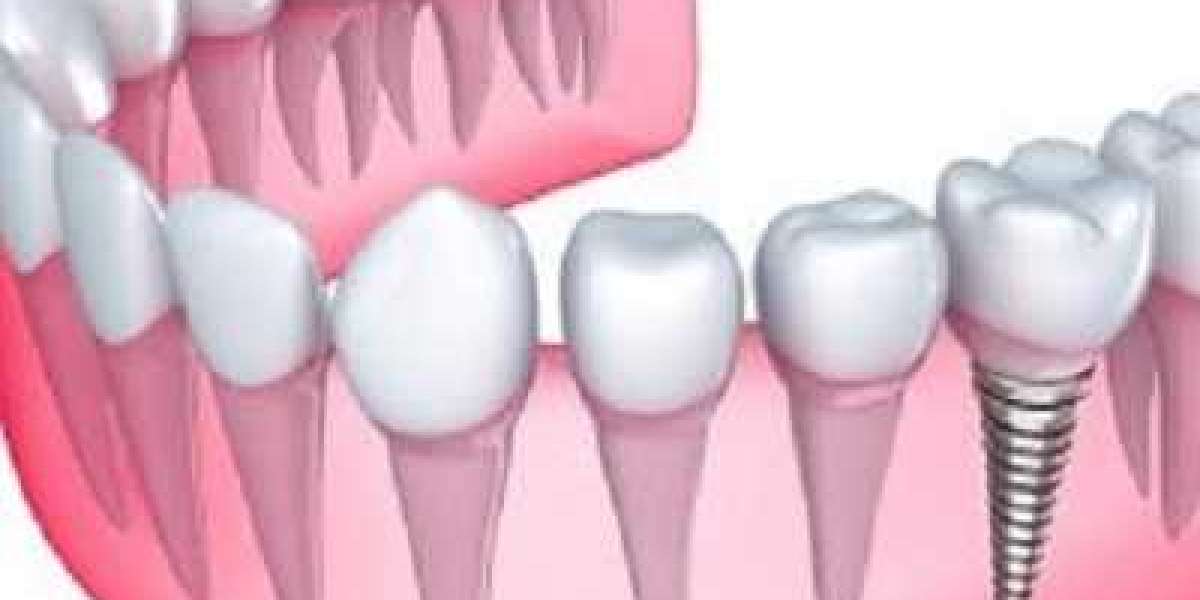Dental implants have become a highly sought-after solution for replacing missing teeth due to their durability, functionality, and natural appearance. While they are an excellent option for adults, the suitability of dental implants for teenagers requires careful consideration. The decision to proceed with dental implants in adolescents involves evaluating several factors, including age, bone development, and overall dental health. This article explores whether Dental Implants Clinic Dubai are a good option for teenagers and the considerations involved in making this decision.
Understanding Dental Implants:
Dental implants are artificial tooth roots, typically made of titanium, that are surgically placed into the jawbone. Once the implant is securely integrated with the bone, a crown is attached to restore the appearance and function of the missing tooth. Implants offer a permanent solution that closely mimics natural teeth in both aesthetics and functionality.
Age and Bone Development:
One of the primary concerns with placing dental implants in teenagers is the stage of bone development. For dental implants to be successful, the jawbone must be fully developed. In teenagers, the jawbone continues to grow until the late teens or early twenties, depending on gender and individual growth patterns. Placing an implant before the jaw has fully matured can lead to complications, such as the implant becoming misaligned as the bone continues to grow.
For boys, jawbone growth typically completes around the age of 18-20, while for girls, it often completes around 16-18. Dentists usually recommend waiting until the jaw has stopped growing before considering dental implants to ensure long-term success and stability.
Alternatives to Dental Implants for Teenagers:
Given the risks associated with placing implants in a still-developing jaw, alternative treatments are often recommended for teenagers. Some of these options include:
Orthodontic Solutions:
Braces or clear aligners can be used to close gaps caused by missing teeth or to prepare the space for a future implant once the jaw has fully developed.
Removable Partial Dentures:
These temporary solutions can fill the gap left by a missing tooth and can be adjusted as the teenager’s mouth grows.
Resin-Bonded Bridge:
A resin-bonded bridge is a conservative option that involves bonding a false tooth to adjacent teeth. It is less invasive than a traditional bridge and can be a temporary solution until the patient is old enough for implants.
Space Maintainers:
If a teenager loses a tooth prematurely, a space maintainer can be used to keep the space open for a future implant or other restoration.
When Are Dental Implants Appropriate for Teenagers?
In some cases, dental implants may be considered for teenagers, particularly if the jawbone has fully developed or if there are extenuating circumstances that make other options less viable. Before proceeding, the dentist will conduct a thorough evaluation, including X-rays or 3D scans, to assess bone maturity and determine if the teenager is a good candidate for implants.
For teenagers who have lost teeth due to trauma, congenital absence, or other reasons, the dentist may recommend a staged approach, where temporary solutions are used until the patient is old enough for implants. This ensures that the final result is stable and aesthetically pleasing.
Psychological and Emotional Considerations:
The psychological impact of missing teeth on a teenager should not be underestimated. Missing teeth can affect self-esteem, confidence, and social interactions, which are particularly important during adolescence. While dental implants can provide a permanent solution, the need for temporary alternatives until the jaw is fully developed should be balanced with the teenager’s emotional and social needs.
Parents and guardians should work closely with the dentist to choose the best interim solution, taking into account both the teenager’s physical and emotional well-being.
Long-Term Planning:
For teenagers who may be candidates for dental implants in the future, it’s essential to have a long-term treatment plan in place. This plan should consider the best timing for implant placement, interim solutions, and any orthodontic treatments needed to prepare the mouth for implants. Regular dental check-ups and consultations will be crucial in monitoring jaw growth and adjusting the treatment plan as needed.
Conclusion:
While dental implants are generally not recommended for teenagers due to the ongoing development of the jawbone, they can be an excellent option once growth is complete. In the meantime, various temporary solutions are available to address the aesthetic and functional concerns associated with missing teeth. The decision to use dental implants in teenagers should be made on a case-by-case basis, with careful consideration of the individual's growth, dental health, and emotional well-being.














